
Montenegro is a country in Southeast Europe, located in the Balkans. It is bordered by Bosnia and Herzegovina to the north, Serbia to the northeast, Kosovo to the east, Albania to the southeast, and Croatia and the Adriatic Sea to the northwest with a coastline of 293.5 km. Podgorica is the country's capital and its largest city; it covers 10.4% of Montenegro's territory of 13,812 square kilometres (5,333 sq mi), and is home to roughly 31% of its total population of 621,000. Cetinje is the former royal capital and cultural centre of Montenegro and is the location of several national institutions, including the official residence of the President of Montenegro.
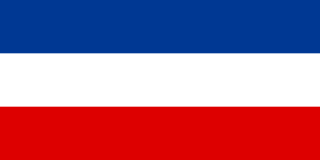
Serbia and Montenegro, known until 2003 as the Federal Republic of Yugoslavia, FR Yugoslavia or simply Yugoslavia, was a country in Southeast Europe located in the Balkans that existed from 1992 to 2006, following the breakup of the Socialist Federal Republic of Yugoslavia. The country bordered Hungary to the north, Romania to the northeast, Bulgaria to the southeast, North Macedonia to the south, Croatia and Bosnia and Herzegovina to the west, and Albania to the southwest. The state was founded on 27 April 1992 as a federation comprising the Republic of Serbia and the Republic of Montenegro. In February 2003, it was transformed from a federal republic to a political union until Montenegro seceded from the union in June 2006, leading to the full independence of both Serbia and Montenegro.

Cetinje is a town in Montenegro. It is the former royal capital of Montenegro and is the location of several national institutions, including the official residence of the president of Montenegro. According to the 2023 census, the town had a population of 12,460 while the Cetinje Municipality had 14,465 residents. Cetinje is the centre of Cetinje Municipality. The city rests on a small karst plain surrounded by limestone mountains, including Mount Lovćen, the legendary mountain in Montenegrin historiography. Cetinje was founded in the 15th century and became a cradle of the culture of Montenegro. Its status as the honorary capital of Montenegro is due to its heritage as a long-serving former capital of Montenegro.

Montenegrins are a South Slavic ethnic group that share a common ancestry, culture, history, and language, identified with the country of Montenegro.
Montenegrin is a normative variety of the Serbo-Croatian language mainly used by Montenegrins and is the official language of Montenegro. Montenegrin is based on the most widespread dialect of Serbo-Croatian, Shtokavian, more specifically on Eastern Herzegovinian, which is also the basis of Standard Croatian, Serbian, and Bosnian.
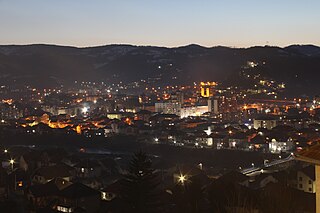
Bijelo Polje is a town in northeastern Montenegro on the Lim River. It has an urban population of 12,900. It is the administrative, economic, cultural and educational centre of northern Montenegro.

An independence referendum was held in Montenegro on 21 May 2006. It was approved by 55.5% of voters, narrowly passing the 55% threshold. By 23 May preliminary referendum results were recognized by all five permanent members of the United Nations Security Council, suggesting widespread international recognition if Montenegro were to become formally independent. On 31 May the referendum commission officially confirmed the results of the referendum, verifying that 55.5% of the population of Montenegrin voters had voted in favor of independence. Because voters met the controversial threshold requirement of 55% approval, the referendum was incorporated into a declaration of independence during a special parliamentary session on 31 May. The Assembly of the Republic of Montenegro made a formal Declaration of Independence on Saturday 3 June.

The economy of Montenegro is currently in a process of transition, as it navigates the impacts of the Yugoslav Wars, the decline of industry following the dissolution of the Yugoslavia, and economic sanctions imposed by the United Nations. Montenegro joined the World Trade Organization on 29 April 2012. Montenegro joined the North Atlantic Treaty Organization on 5 June 2017. The accession of Montenegro to the European Union is planned for 2025.

The municipalities are the first level administrative subdivisions of Montenegro. The country is divided into 25 municipalities including the Old Royal Capital Cetinje and the Podgorica Capital City. Podgorica is divided into one subdivision called city municipality, forming the most basic level of local government.

Montenegro has participated in the Eurovision Song Contest 12 times since its debut in 2007. Previously it had participated as part of Yugoslavia and as part of Serbia and Montenegro.

Islam in Montenegro refers to adherents, communities and religious institutions of Islam in Montenegro. It is the second largest religion in the country, after Christianity. According to the 2011 census, Montenegro's 118,477 Muslims make up 20% of the total population. Montenegro's Muslims belong mostly to the Sunni branch. According to the estimate by the Pew Research Center, Muslims have a population of 130,000 (20.3%) as of 2020.

The Montenegro national football team has represented Montenegro in men's international football since 2007. It is controlled by the Football Association of Montenegro, the governing body for football in Montenegro. Montenegro's home ground is Podgorica City Stadium in Podgorica.
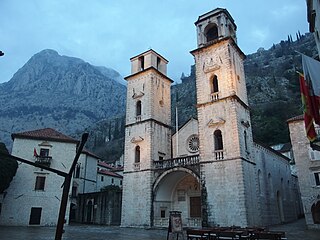
Eastern Orthodox Christianity is largest religion in Montenegro, but there are also sizeable numbers of adherents of both Catholic Christianity and Islam.
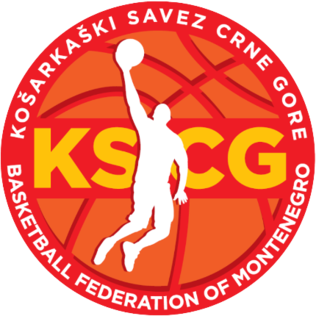
The Montenegro men's national basketball team represents Montenegro in international basketball tournaments. The supervising body is the Basketball Federation of Montenegro.
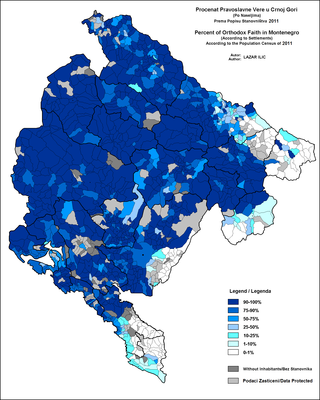
Eastern Orthodoxy in Montenegro refers to adherents, religious communities, institutions and organizations of Eastern Orthodox Christianity in Montenegro. It is the largest Christian denomination in the country. According to the latest census of 2011, 446,858 citizens of Montenegro (72.07%) registered as Eastern Orthodox Christians. The majority of Eastern Orthodox people in Montenegro are adherents of the Serbian Orthodox Church. A minor percentage supports the noncanonical and unrecognized Montenegrin Orthodox Church, which has the status of a religious non-governmental organization (NGO) since its founding in 1993.
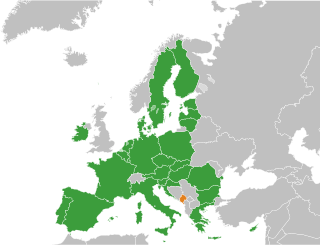
Accession of Montenegro to the European Union is on the agenda for future enlargement of the EU.
Miss Montenegro is a national beauty pageant in Montenegro.

Turks in Montenegro, also known as Turkish Montenegrins and Montenegrin Turks, are ethnic Turks who form an ethnic minority in Montenegro.
The Montenegro women's national basketball team represents Montenegro in international women's basketball tournaments. The supervising body is the Basketball Federation of Montenegro.
The Montenegrin women's national team entered international competition in 2008, playing their first official match on 27 August, against Republic of Ireland in Bijelo Polje (68–56).
The Montenegrin women's team participated at the EuroBasket Women four times – 2011, 2013, 2015, and 2017 reaching the quarterfinals twice.

Serbs of Montenegro or Montenegrin Serbs, compose native and the second largest ethnic group in Montenegro, after the ethnic Montenegrins. Additional 0.64% of the population is made up of Serbs-Montenegrins and Montenegrins-Serbs.
















